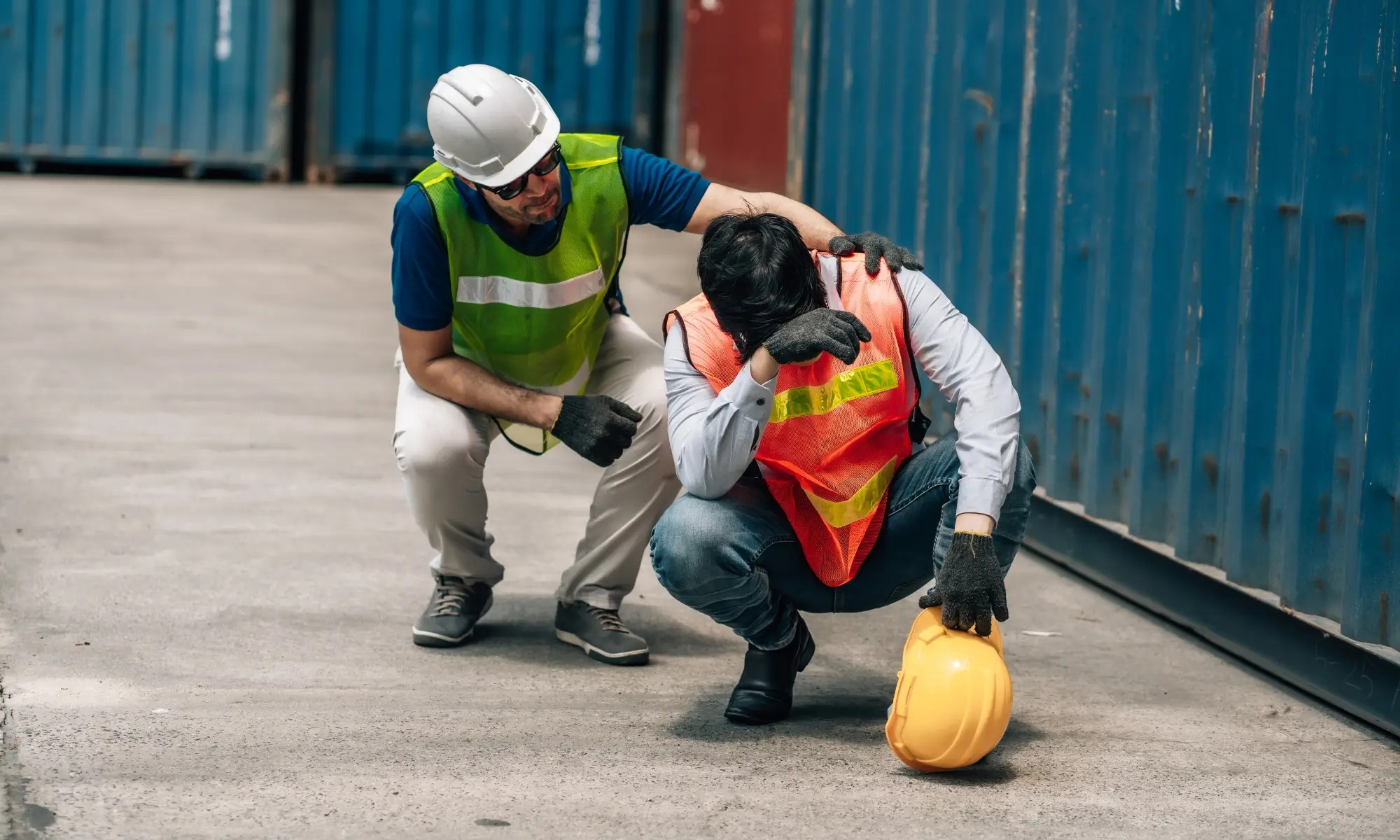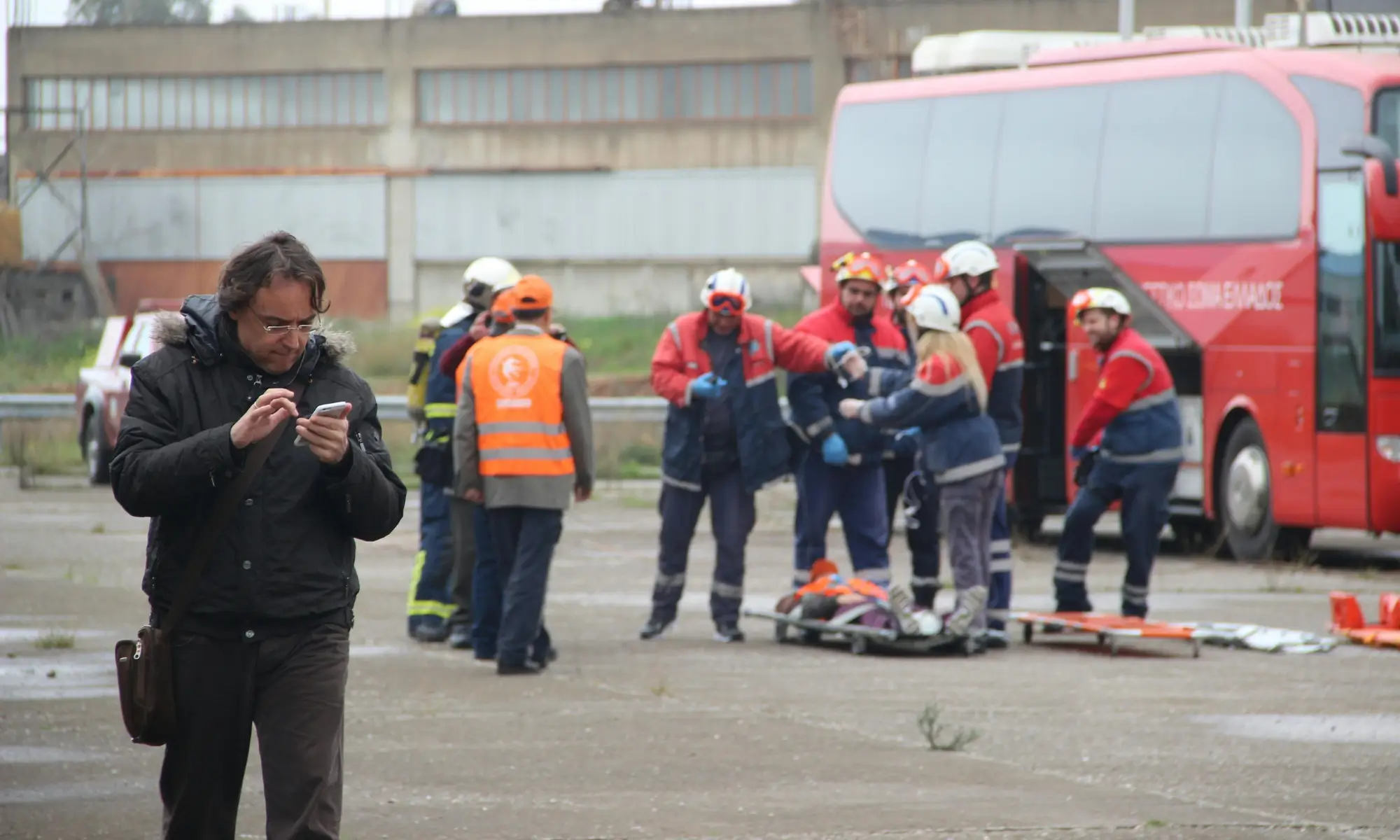Unfortunately, incidents are inevitable in modern workplaces’ complex and dynamic environments. When they do occur, it’s essential that organizations conduct thorough, unbiased, and methodical investigations. A successful investigation is not about assigning blame but uncovering the root causes to prevent a recurrence, enhance safety, and potentially prepare for litigation in severe cases.
This blog post will delve into the “Seven Steps of a Thorough Incident Investigation,” a systematic approach to exploring and addressing workplace incidents. This strategy involves learning from past incidents to ensure a safer and more productive working environment. Whether you’re an employer, a safety officer, or an employee, this guide provides invaluable insights into the vital stages of a workplace incident investigation.

What is Incident Investigation?
An incident investigation is a process carried out in response to a workplace accident, near miss, or other safety-related incidents. Its primary objective is to identify the underlying causes of the incident, understand why it happened, and develop strategies to prevent similar incidents from happening in the future.
Incident investigation is not about finding fault or assigning blame. Instead, it’s about understanding the factors contributing to the incident, including environmental conditions, human behavior, equipment failure, inadequate training, poor procedures, or a combination.
The importance of incident investigation lies in its role in promoting a safer working environment. By learning from past incidents, organizations can implement changes that reduce the risk of future accidents and injuries. Here are a few reasons why the incident investigation is essential:
- Prevention of Future Incidents: By identifying the root causes of an incident, measures can be taken to prevent similar incidents from occurring in the future.
- Compliance with Legislation: In many jurisdictions, incident investigations are a legal requirement, especially for severe accidents resulting in injury or significant property damage.
- Promotion of Safety Culture: Conducting thorough incident investigations demonstrates a company’s commitment to safety and encourages a culture of responsibility and awareness among employees.
- Minimizing Costs: Incidents can lead to significant costs, including medical expenses, damage repairs, productivity losses, and potential legal liabilities. Preventing incidents from recurring can save these expenses.
- Employee Trust and Morale: When employees see that their employer takes incidents seriously and is committed to preventing future ones, it can increase trust, improve morale, and promote engagement.
Therefore, a well-conducted incident investigation is crucial in managing risk, promoting safety, and maintaining a healthy and productive work environment.

Seven Steps of a Thorough Incident Investigation
When a workplace incident occurs, the subsequent investigation should be thorough and methodical, aiming to uncover the root causes rather than merely assigning blame. This approach helps identify the necessary changes in processes, training, or equipment to prevent such incidents from recurring. Here are the seven steps of a thorough incident investigation:

1. Immediate Response
The first step in a thorough incident investigation is to act promptly and decisively. Immediate response is a multi-faceted process that involves several crucial elements:
- Emergency Response Coordination: Begin by coordinating the company’s emergency response. This is the first line of action to mitigate the immediate effects of the incident. Depending on the nature and severity of the incident, this could involve calling emergency services, such as fire, medical, or police departments.
- Attending to Injuries and Damage: Ensure that any injured workers receive immediate medical attention. This might involve on-site first aid treatment or arranging transportation to a medical facility if needed. Also, assess and address any immediate damage caused by the incident. This may range from minor equipment damage to significant structural issues that could pose further risks.
- Notification: Alert all necessary personnel about the incident. This includes the management team and relevant safety officers within the company and extends to the families of the affected workers, if necessary. In some situations, the company may also need to inform external bodies, like regulatory agencies or insurance companies.
- Site Securement: Secure the incident site to ensure that a comprehensive and accurate investigation can be conducted later. This means preventing unauthorized access to the area, halting work, and preserving all relevant materials and equipment. The primary aim is to maintain the site’s integrity and avoid contamination of evidence, which can be crucial in determining the cause of the incident.
- Risk Assessment: Identify and mitigate potential hazards that could cause further harm. This could include cordoning off dangerous areas, deactivating machinery, or applying temporary repairs.
- Determine Investigation Depth: Based on the severity and the potential implications of the incident, management must decide on the depth and extent of the subsequent investigation. This decision often involves considerations of legal, financial, and operational factors. While minor incidents may require a simple internal review, more serious incidents may necessitate a full-scale investigation involving external experts or agencies.
Through swift and thoughtful action in the initial response stage, companies can prevent further harm, preserve essential evidence, and lay the groundwork for a thorough and effective incident investigation.

2. Information Gathering
Once the incident site is secure and the immediate response measures are in place, it’s crucial to shift the focus toward gathering as much data and information about the incident as possible. Time is of the essence during this phase because vital information can be lost, memories can fade, and physical evidence can be compromised as regular work operations resume.
Interview Witnesses:
Begin by speaking with everyone who witnessed the incident. Ask each witness to provide a comprehensive account of what they saw, experienced, or noticed leading up to, during, and following the incident. Encourage them to share seemingly insignificant details, sometimes providing crucial insights. These interviews should be conducted non-threatening to create an atmosphere of trust. Remember, the goal here is to gather information, not to assign blame.
All witness accounts should be documented and signed to confirm their accuracy and reliability. Even those who didn’t directly witness the incident but were present in the area at the time should be interviewed, as their accounts can help build a more complete picture and could become important if witness accounts differ or change over time.
Collect Documentation:
Gathering relevant documentation is an important part of the information collection phase. This might include equipment logs, maintenance records, training documents, safety inspection reports, operational guidelines, and other records that might shed light on the incident. Photographs or video footage of the incident site and any equipment can provide valuable visual evidence. At the same time, diagrams or sketches can help visualize the layout and movement during the incident.
Identify Information Gaps:
After collecting all available data and information, the investigator should review it thoroughly to identify gaps or inconsistencies. If certain aspects of the incident remain unclear or unexplained, further investigation may be needed to fill these gaps. This could involve additional witness interviews, a more detailed examination of the physical evidence, or consultation with technical experts.
Through comprehensive and diligent information gathering, investigators can assemble a detailed and accurate understanding of the incident, providing a solid foundation for the next stages of the investigation. This phase is crucial for revealing the underlying factors and conditions that contributed to the incident, guiding the way toward effective preventative measures.

3. Release the scene
After all the necessary data has been gathered from the incident site, the next step is releasing the scene so that normal operations can resume. Maintaining a secured scene indefinitely is often impractical, particularly in industries like construction, where delays can have significant cost implications and operational consequences.
- Assess Completion of Data Gathering: Before releasing the scene, the investigator must ensure that all available and necessary information has been gathered. This includes ensuring all interviews have been conducted, photographs and videos taken, and any relevant documents, logs, or records have been obtained. The investigator should feel confident that no further tangible evidence can be collected from the scene.
- Preserve Evidence: While gathering evidence, the investigator should also consider how to preserve it for potential future needs. This can involve creating a secure digital archive of photographs and witness statements, properly storing physical evidence, and backing up any other critical documentation. In the case of severe incidents where litigation may be involved, professional evidence preservation methods may be required.
- Site Remediation: Any necessary remediation must occur before work can resume at the incident site. This could involve repairing damaged equipment or structures, cleaning up spills or debris, or implementing temporary safety measures to prevent further incidents. In some cases, it may also involve bringing in external specialists, such as structural engineers or industrial hygienists, to ensure the site is safe for work to recommence.
- Clearance for Work Resumption: Once all the above steps have been completed, the scene can be released for normal operations to resume. The investigator, often with a safety officer or site manager, will approve work to recommence. In some instances, a phased return to work might be necessary, with operations gradually ramping back up as the site returns to its normal state.
Releasing the scene marks a significant milestone in the investigation process, signaling that the focus is shifting from gathering data about the past incident to analyzing the collected data and identifying preventative measures for the future.

4. Conducting the Analysis
Once all the information has been collected and the incident site has been released, it’s time to transition to the analysis phase of the investigation. This involves synthesizing and examining the gathered data to understand the events and factors contributing to the incident.
Timeline Creation:
Creating a detailed incident timeline is one of the most effective ways to begin the analysis. Start from the earliest known relevant event—this could be hours, days, or even weeks before the actual incident, especially if factors like equipment maintenance, operational changes, or environmental conditions played a role. Continue through the incident itself, and include any notable post-incident actions. This chronological account provides a clear sequence of events and can help identify cause-and-effect relationships.
Logical Analysis:
In addition to a chronological overview, organizing the information logically is helpful. This means categorizing data based on common themes, such as human actions, equipment performance, environmental conditions, and procedural adherence. This approach can help highlight patterns and correlations that might not be immediately apparent in a chronological view, leading to a deeper understanding of contributing factors and underlying root causes.
Identifying Knowns and Unknowns:
As part of the analysis, the investigator should clearly delineate what is known from the gathered data and what remains unknown or unclear. Acknowledging these unknowns can help identify limitations in the current understanding of the incident and indicate areas where further information might be required.
Determining Probable Cause:
With a detailed understanding of the events leading up to, during, and following the incident, the investigator can now work towards identifying the probable cause or causes. This is often a complex process, as it’s rare for incidents to have a single, simple cause. Instead, it’s usually a combination of interconnected factors, like human error, equipment failure, procedural deficiencies, or environmental conditions.
Through comprehensive and thoughtful analysis, investigators can move beyond the simple facts of the incident to understand the underlying causes, ultimately providing the insights needed to prevent similar incidents in the future.

5. Report Development
Following the in-depth analysis phase, consolidating all the findings into a comprehensive and coherent report is crucial. This report is the official record of the incident, its investigation, and the derived conclusions. It facilitates communication about the incident and can serve as a valuable tool for future reference and learning.
- Compilation of Facts: The report should start by laying out all the facts about the incident. This includes the date, time, location, personnel involved, description of the incident, and a record of any injuries or damage sustained. In this section, the investigator should stick to the facts, avoiding speculation or subjective interpretation.
- Summary of Findings: This section of the report outlines the key findings from the investigation. It should provide a clear and concise overview of what occurred, drawing on the chronological and logical analyses conducted. This summary should be easy to understand, even for individuals not involved in the investigation, and should avoid technical jargon wherever possible.
- Conclusion and Probable Cause: The report should clearly state the investigator’s conclusions based on the analyzed data. This includes identifying the probable cause or causes of the incident. This section must be backed by evidence from the investigation to support its validity.
- Supporting Documentation: The report should include or reference all supporting documentation. This can include signed witness statements, photographs or video footage, diagrams of the incident site, equipment logs, maintenance records, and any other relevant documents. If physical evidence was collected, a detailed description and photographs of these items should also be included.
- Potential Litigation Considerations: If the incident could lead to legal action, this must be considered when writing the report. The report could become a piece of evidence in a legal case, so it’s crucial to ensure that it is accurate, factual, and professionally presented. It may be advisable to have the report reviewed by legal counsel before it’s finalized and distributed.
Developing a comprehensive report helps consolidate and clarify the investigation findings and serves as a tangible demonstration of the organization’s commitment to safety and continuous improvement. It is a crucial tool for sharing insights and lessons learned, with the ultimate goal of preventing similar incidents in the future.

6. Share the findings
The investigation process culminates in the sharing of its results and recommendations. An incident investigation’s true value lies in identifying what went wrong and leveraging that knowledge to enhance safety measures and prevent future incidents.
- Audience Identification: The first step in sharing the findings is identifying the appropriate audiences. This typically includes all relevant stakeholders, from the management team responsible for implementing changes to the workers who can benefit from a deeper understanding of safe practices. Also, consider including other stakeholders who can benefit from the findings, such as health and safety committees, union representatives, or third-party contractors.
- Communication of Findings: The next step involves disseminating the investigation results. This could take several forms, such as written summaries, visual presentations, or verbal briefings, and should be tailored to best suit the audience. Regardless of the format, the communication should clearly articulate the conditions and contributing factors that led to the incident and the necessary changes or recommendations to prevent a similar occurrence.
- Promoting Safety Culture: Sharing the results of an investigation is a powerful tool to enhance safety culture within an organization. It demonstrates the company’s commitment to safety and transparency, reinforces the importance of safe practices, and motivates employees to prioritize safety in their daily operations. Additionally, it empowers workers with the knowledge and understanding to make safer choices and take appropriate action in potential risk situations.
- Consideration of Potential Legal Implications: It is crucial to consult legal counsel before releasing any details about the incident, especially in cases with potential legal implications. They can review the investigation findings and the manner of their dissemination to ensure they don’t inadvertently create legal exposure for the company.
Ultimately, sharing findings and recommendations should be a learning opportunity for everyone involved, contributing to a more informed, aware, and safety-conscious work environment.

7. Implementation of Changes
The final stage in the incident investigation process is implementing changes based on the investigation’s findings and recommendations. This proactive step is critical in preventing the recurrence of similar incidents and continually improving the workplace’s overall safety.
Action Plan Development:
The first part of this stage involves developing an action plan based on the investigator’s recommendations. The plan should clearly outline the necessary changes to policies, procedures, training, equipment, or any other operational aspect identified as contributing factors to the incident. This might involve procuring better safety equipment, changes to work procedures, improvements in training programs, or even changes in the organizational culture toward safety.
Implementation of Changes:
Once the action plan is ready, the next step is to execute the changes. This may require resources such as time, personnel, and budget, so proper planning and allocation of resources are essential. Management plays a critical role here, as they must oversee the implementation, provide the necessary support, and ensure that everyone understands their role in the new processes.
Follow-up and Monitoring:
Making changes is not a one-time activity but an ongoing process. Regular monitoring and follow-ups are necessary to ensure that the implemented changes are effective and are being adhered to. This might involve periodic safety audits, continuous staff training and retraining, and open communication lines for employees to raise safety concerns. It’s also essential to review the effectiveness of the changes made periodically and adjust as necessary for continuous improvement.
Learning and Improvement:
The ultimate aim of all these steps is to transform the unfortunate occurrence of an incident into a learning experience that strengthens the organization’s safety culture. The changes made due to an investigation should contribute to a safer, more aware, and more responsible work environment, thus ensuring that the resources invested in the incident investigation translate into meaningful, long-term benefits.
Making changes based on the findings of an incident investigation is a proactive step that underscores the organization’s commitment to safety. It ultimately transforms the workplace into a safer, more secure environment.
Conclusion
Conducting a thorough incident investigation is an integral part of a comprehensive approach to workplace safety. The outlined seven-step process offers a systematic approach to understanding the causes of workplace incidents, learning from them, and implementing necessary changes to prevent future occurrences.
From the immediate response to the incident, gathering information, releasing the scene, analyzing the collected data, developing a detailed report, sharing the findings with relevant stakeholders, and finally making necessary changes, each step plays a crucial role in fostering a proactive safety culture. This process aims to address immediate concerns following an incident and contributes to long-term improvements in workplace safety.
Remember, the ultimate goal of any incident investigation is not to assign blame but to uncover the underlying issues that led to the incident. This approach allows us to learn and grow from these unfortunate events, enhancing the overall safety of our work environments and the well-being of our employees.
A committed and consistent application of these steps can significantly reduce the likelihood of similar incidents occurring in the future, making them invaluable in the ongoing pursuit of a safe, secure, and productive workplace. Let’s commit to these steps and ensure safety is not just a word but a way of life in our workplaces.

